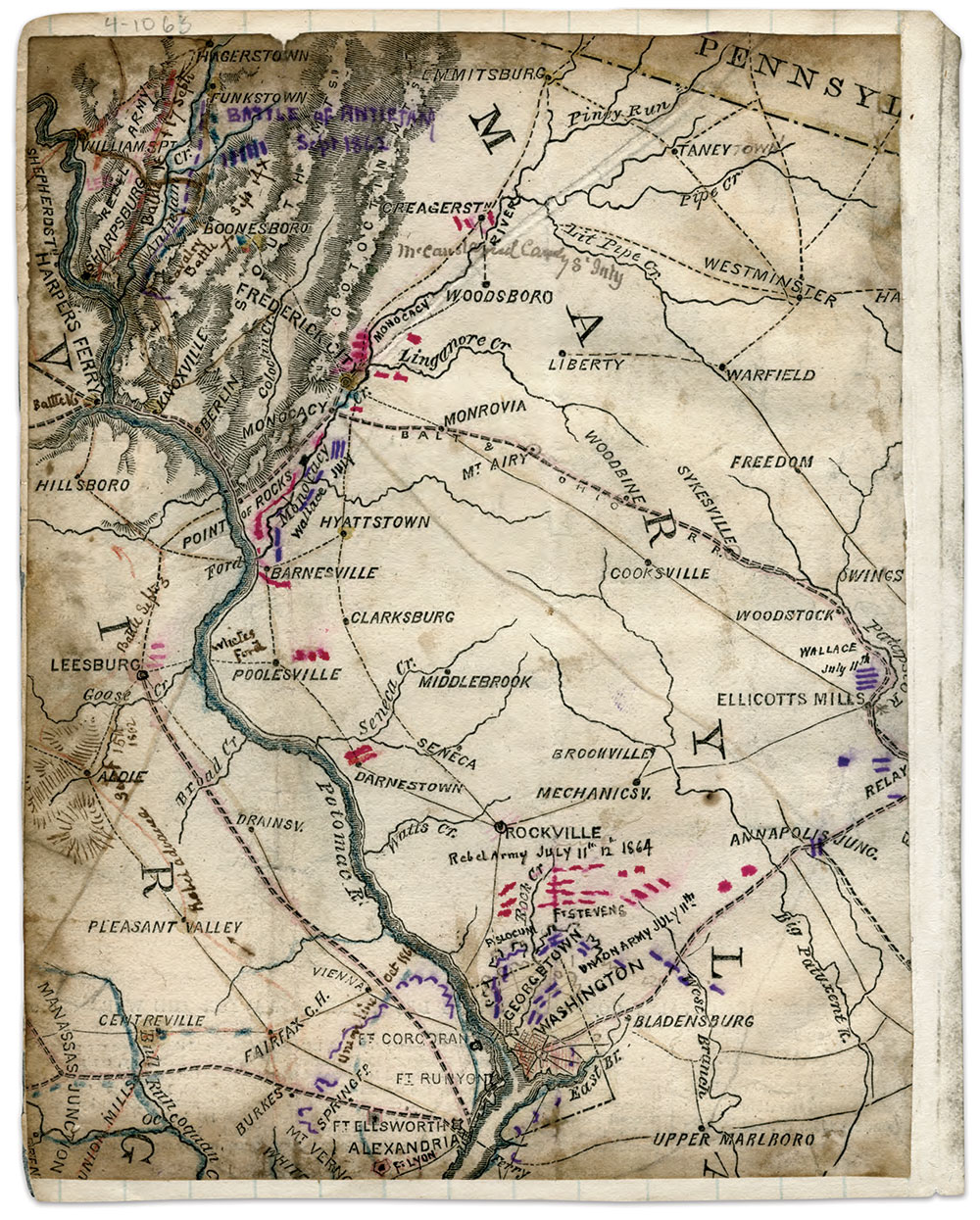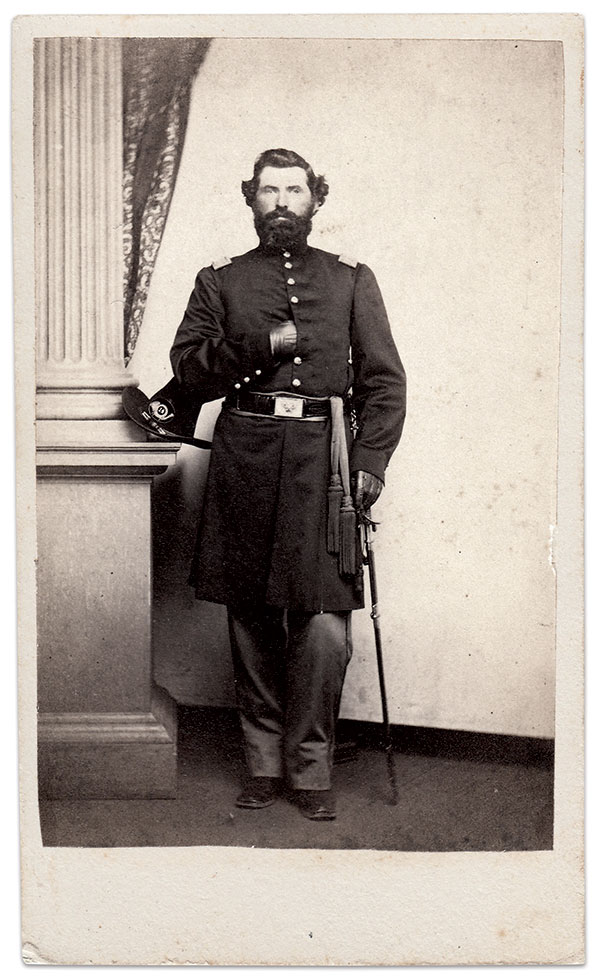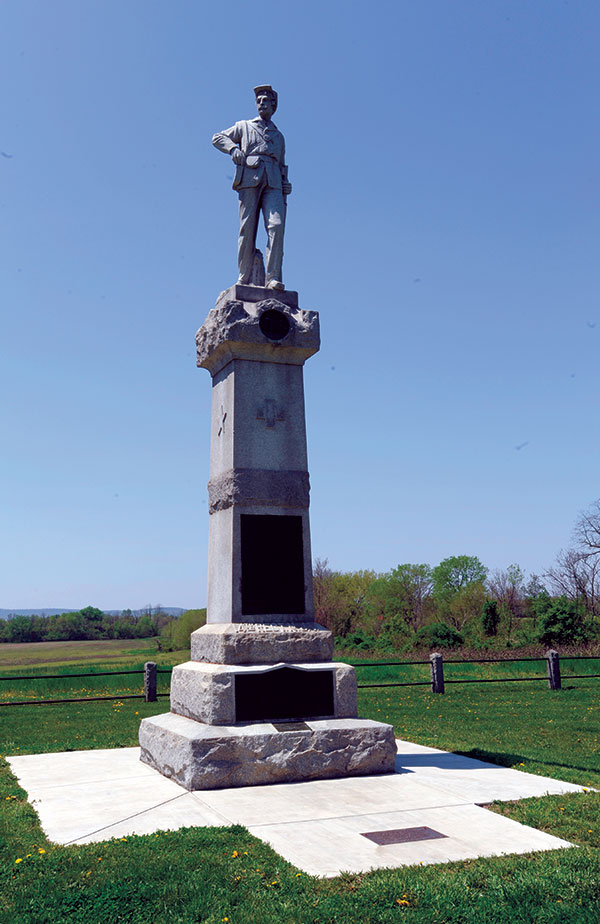By Scott Valentine
The 1864 Battle of the Monocacy determined the fate of a back door to Washington, D.C. If Lt. Gen. Jubal Early’s Confederates broke through it, the path to the lightly defended capital would be wide open. If Maj. Gen. Lew Wallace’s Union forces held it shut, the city would remain safe.


Early and his 18,000-strong corps hit Wallace’s roughly 5,800-man division accompanied by militia on July 9. The numbers foretold the outcome of the battle. But the stubborn resistance of Wallace’s forces in a toe-to-toe slugfest slowed the rebels and bought precious hours for Washington to mobilize.
Wallace’s men paid a high price in blood for the extra time. One regiment in particular was virtually shot to pieces: the 14th New Jersey Infantry. The Jerseymen suffered heavy losses, especially in officers. One by one they suffered wounds or died, and the chain of command devolved until only one officer remained on his feet when the regiment withdrew from the field.
One of the wounded officers, Capt. Chauncey Harris, 33, of Company C, suffered a gunshot in the left shoulder during the first minutes of the fight. As comrades placed him in an ambulance, two more shots hit him in the right leg near his ankle. Dangerously wounded and in great pain, Harris was taken to the nearby farmhouse of Edward Baker, located in Baker’s Valley.
After a few weeks under the care of the farmer’s 21-year-old daughter, Clementine America Baker, personnel moved Harris to a Baltimore hospital. Months later, on December 8, the army discharged him on account of his injuries. He received brevets of major and lieutenant colonel for gallantry at the Monocacy and meritorious services during the war.

Harris returned to the Baker Valley and courted Clementine, and they married on May 22, 1865. Harris brought his bride home to Elizabeth, N.J., where he became involved in local politics as an alderman and later owned a mill. In 1881, a fellow Union veteran, President James A. Garfield, appointed Harris postmaster of Elizabeth. He served in this post for two decades. Harris also founded the Ulrich Dahlgren Grand Army of the Republic Post.
Clementine and Harris had three daughters, Luella, Grace and Ida May. Chauncey passed away in 1911 at age 81. Clementine joined him in 1932 at about age 90.
Scott Valentine is a MI Contributing Editor.
SPREAD THE WORD: We encourage you to share this story on social media and elsewhere to educate and raise awareness. If you wish to use any image on this page for another purpose, please request permission.
LEARN MORE about Military Images, America’s only magazine dedicated to showcasing, interpreting and preserving Civil War portrait photography.
VISIT OUR STORE to subscribe, renew a subscription, and more.

